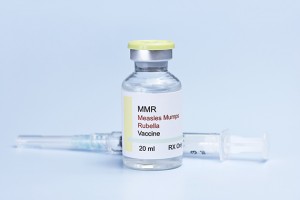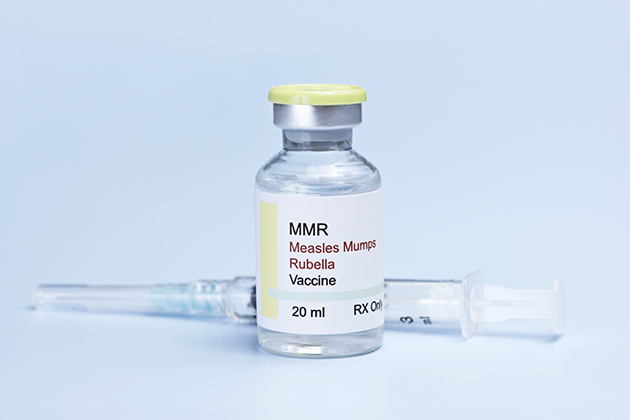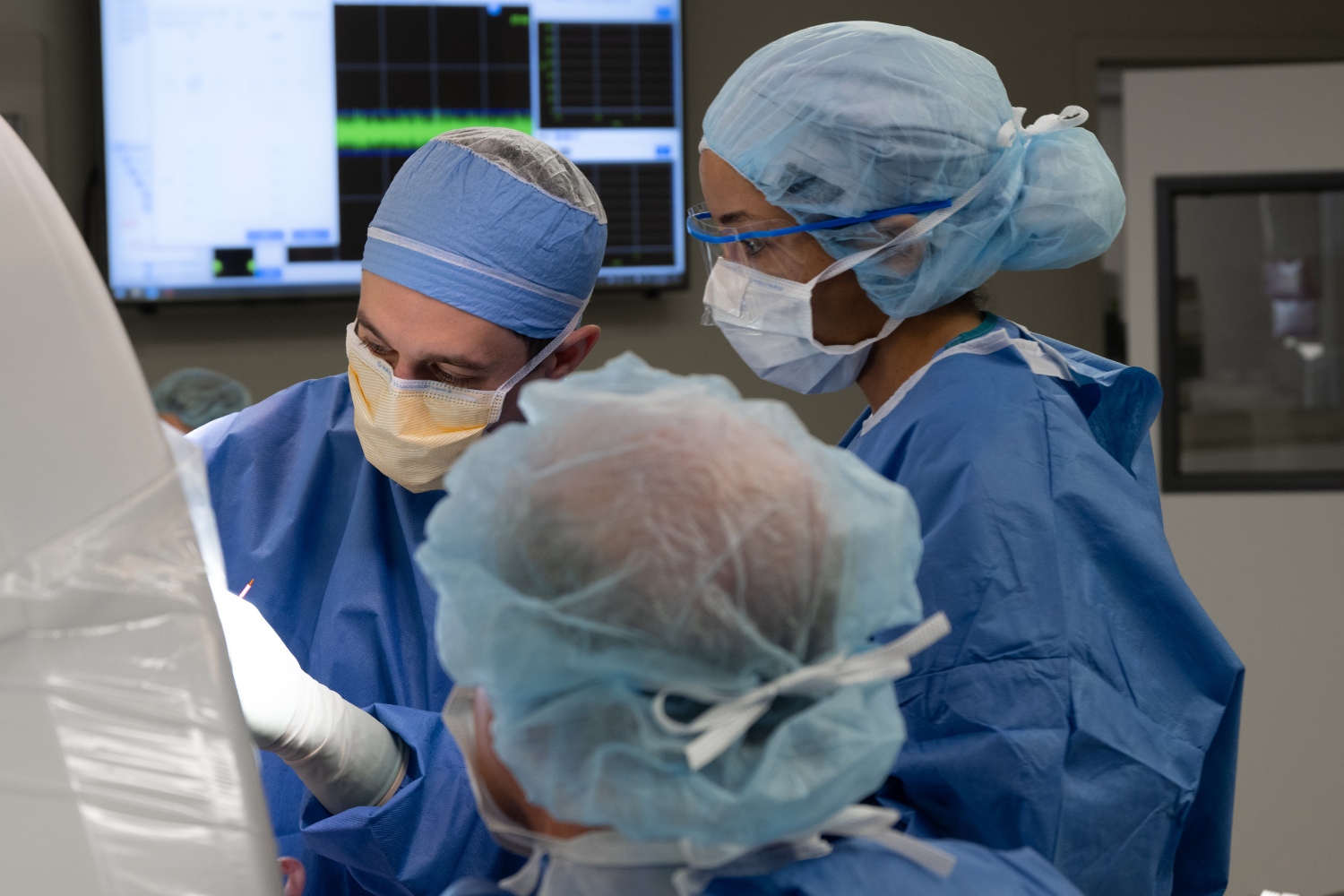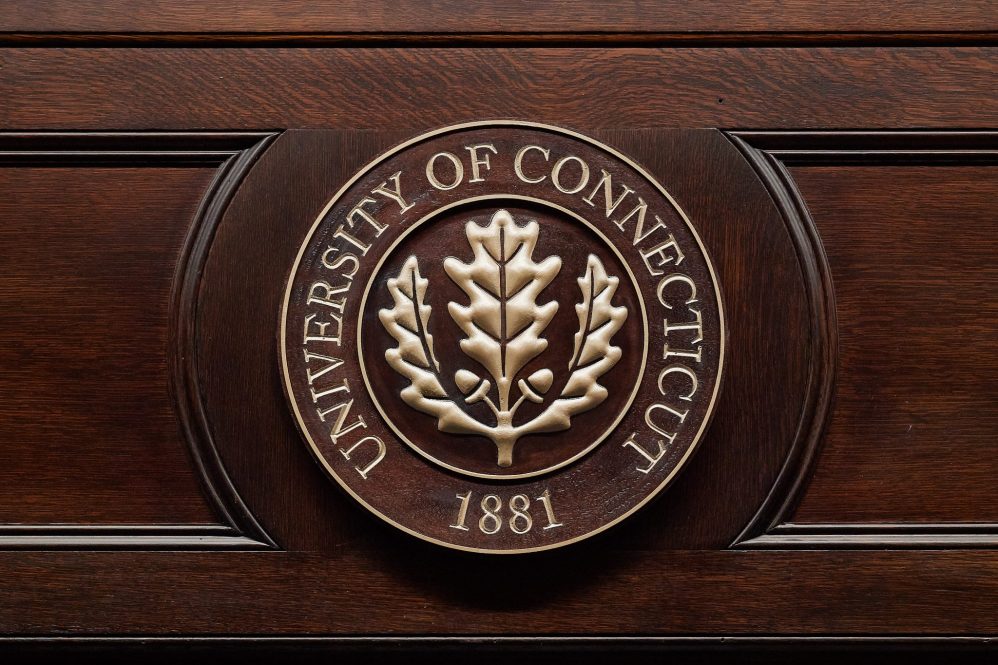
An outbreak of a disease that was eradicated from the United States 14 years ago is making its way east from California. It is highly contagious, can lead to pneumonia or encephalitis, and can be fatal.
And it’s almost entirely preventable.
Two infectious diseases physicians at UConn Health say the current measles outbreak is a real-life example of what can happen when people don’t get their recommended vaccines.
“It’s important for people to be kept up-to-date on their routine immunizations, so we don’t have these outbreaks,” says Dr. Trini Mathew, infectious diseases physician and hospital epidemiologist. “When someone with measles is in an amusement park and exposes others who did not get the immunization and are therefore susceptible to that infection, those others get infected with measles. If people were up-to-date with immunizations, even if they’d been exposed, they would not come down with the disease because they would have immunity.”
Dr. Paul Skolnik, who chairs the Department of Medicine at the UConn School of Medicine, has written chapters on measles in the highly used online clinical resource “UpToDate.”
“Measles is an ideal pathogen for widespread transmission,” Skolnik says. “It’s highly contagious, so if you’re exposed there’s a high attack rate. Second, it’s an airborne infection that does not require direct contact for transmission. And third, people are contagious for others before the rash appears, so they’re not even aware they have measles and they may go into public settings where others – if they’re not vaccinated – are susceptible.”
As an airborne infection, the measles virus can be in droplet particles that linger in the air and people can inhale them. The particles may remain in the air for hours, depending on the humidity – longer in dryer air.
Three to five days before the rash associated with measles appears, a patient may show symptoms synonymous with a simple viral infection, including fever, cough, runny nose, or red eyes. That patient can transmit the virus to others before knowing he or she has measles.
If people were up-to-date with immunizations, even if they’d been exposed, they would not come down with the disease because they would have immunity.–Dr. Trini Mathew
Another thing that’s working against containment of a virus that’s been relatively rare for nearly a generation is that some younger physicians have never seen a case of measles, Skolnik says: “This could lead to a delay in diagnosis, and lack of appropriate infection control precautions.”
It all adds up to a message physicians have been pushing for more than 60 years: Get vaccinated, and if you’re not sure whether you are current on your vaccinations, consult your physician.
The recommendations are for children to receive the measles-mumps-rubella (MMR) vaccine at around 15 months, with a second dose no sooner than 28 days from the first. The MMR shot can also be given at any age. Mathew says it has a 97 percent protection rate after completing the second dose.
“[Measles] is an infection that is vaccine-preventable, that was eradicated in the U.S. in 2000,” Mathew says. “Unfortunately – maybe there’s a sense of complacency – people feel they don’t need to be immunized.”
While there may appear to be a debate among the public about the benefits of vaccinations for public health, there is little debate in the scientific and medical communities.
“For us, the data are clear cut, we have decades of experience in terms of how to prevent this, and we know how bad the illness can be,” Skolnik says. “Many of the people who don’t want to get their kids vaccinated, or themselves, still believe in either a link to autism or unhealthy levels of mercury – yet these have been debunked, definitively. There are anti-vaccine believers, with a lack of – or disbelief in – scientific knowledge, working, sometimes unwittingly, to put others at risk.”
There are no clear-cut therapies to cure measles, only supportive care to treat the symptoms and wait for the patient’s immune system to tackle the virus. That doesn’t always happen.
Before the start of the U.S. measles vaccination program in 1963, the Centers for Disease Control and Prevention says 3 to 4 million people in the U.S. got the measles each year, 400 to 500 of them died, 48,000 were hospitalized, and 4,000 developed encephalitis because of measles. The CDC’s tally of measles cases over each of the last four years, starting with 2014, is 644, 189, 55, and 220. The 220 cases in 2011 was the post-eradication peak, until last year.
With the vaccination rate down in the U.S., a single person who hasn’t been vaccinated can bring measles back from another part of the world. The virus can find its way to others who lack immunity, and if there are enough in a community – or a popular tourist destination like Disneyland – an outbreak becomes a real possibility.
“All the recent outbreaks in the U.S. have been from imported measles,” Skolnik says.
“This is a disease that was eliminated in the United States,” he adds. “Can you imagine if people took the same outlook in the 1950s about polio? Or smallpox? That was a huge effort, a worldwide, international effort, to eliminate smallpox from the world. Theoretically we should be able to do that with measles, but we’re not even close: we’re heading in the wrong direction.”
Follow UConn Health on Facebook, Twitter and YouTube.



